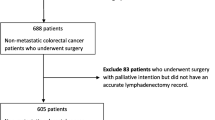Abstract
This study aims for the reconciliation between models of clinical and pathology-based staging to obtain a more accurate assessment of the main factors of prognostic determinants in the classification for cancer staging. Clinical staging was performed on adenocarcinoma of the colon from five patients with age ranging from 57 to 76 years. Clinical stage was based on determining malignant size, estimating doubling time and deriving hypoxic cell energy using the Emad formula. A pathology-based staging was also performed on the same tumours to determine in vitro estimation of cell proliferation of tumour slices by tritiated thymidine incorporation, hypothesising that the malignant fraction of the detected tumour is the fraction of the tumour unlabelled by the tritiated thymidine. The consistency of results of the factors from the two staging types and their histologic grades were analysed using ANOVA. Perfect correlations between cancer staging factors using the clinical mathematical model and pathology based was confirmed (R 2 = 0.98). This provides a clear-cut criterion for accepting the hypotheses of both models for staging of cancer. It also strengthens the confidence in the equivalence of the energy of the unlabelled fraction of the tumour cells by the tritiated thymidine to that of the malignant fraction of the detected tumour (p < 0.0001). Besides the anatomical extent to which the disease has spread, both the tumour doubling time and the histologic classification are significant prognostic determinants which identify the specific tumour histologic grade which allows physicians to develop customised treatment plans for patients.





Similar content being viewed by others
References
Barbalace K. Periodic table of elements—H—hydrogen. EnvironmentalChemistry.com. 1995–2011. Accessed on-line: 12/21/2011 http://EnvironmentalChemistry.com/yogi/periodic/H-pg2.html
Birnie GD, Humexnunoun C (1962) Biochemical ex peninients towards the prediction of clinical responses to fluorinated pyrimidines. Proc Am Assoc Cancer Be search 3:304
Brown JM (1999) The hypoxic cell: a target for selective cancer therapy—eighteenth Bruce F. Cain Memorial Award lecture. Cancer Res 59:5863–5870
Castello PR, David PS (2006) Mitochondrial cytochrome oxidase produces nitric oxide under hypoxic conditions: implications for oxygen sensing and hypoxic signaling in eukaryotes. Cell Metab 3:277–287
Fleming ID (1998) AJCC cancer staging handbook: for the AJCC Cancer Staging Manual. Lippincott Williams & Wilkins, USA
Gillies RJ, Gatenby RA (2007) Hypoxia and adaptive landscapes in the evolution of carcinogenesis. Cancer Metastasis Rev 26:1573
Johnson HA, Bond VP (1961) A Method of labeling tissues with tritiated thymidine in vitro and its use in comparing rates of cell proliferation in duct epithelium, fibroadenoma, and carcinoma of human breast. Cancer 14:639–643
Lieb LM, Lisco H (1966) In vitro uptake of tritiated thymidine by carcinoma of the human colon. Cancer Res 26:733–740
Lucas E (2006-01-31). FIGO staging of cervical carcinomas. screening.iarc.fr. http://screening.iarc.fr/viaviliappendix1.php. Retrieved 2010-10-14
Matthay KK, Panina C (2001) Correlation of tumour and whole-body dosimetry with tumour response and toxicity in refractory neuroblastoma treated with 131I-MIBG. J Nucl Med 42:1713–1721
Minchinton A, Tannock I (2006) Drug penetration in solid tumours. Nat Rev Cancer 6:583–592
Moawad E (2010) Isolated system towards a successful radiotherapy treatment. Nucl Med Mol Imaging 44:123–136
Moawad EY (2011) Radiotherapy and risks of tumour regrowth or inducing second cancer. Cancer Nanotechnol 2:81–93
Moawad EY (2012) Clinical and Pathological Cancer Staging at the Nanoscale. Cancer Nanotechnology. doi:10.1007/s12645-012-0028-x
Sullivan R, Graham CH (2007) Hypoxia-driven selection of the metastatic phenotype. Cancer Metastasis Rev 26:319–331
Wilson JMG, Jungner G (1968) Principles and practice of screening for disease. Geneva: World Health Organization. Public Health Papers, #34, Geneva, Switzerland
Wolberg WH, Brown RR (1962) Autoradiographic studies of in vitro incorporation of uridine and thymidine by human tumour tissue. Cancer Res 22:1113–1119
Conflict of interest
The author declares that there is no conflict of interest concerning this paper.
Author information
Authors and Affiliations
Corresponding author
Additional information
The author is a member of the Korean Society of Nuclear Medicine and of the World Conference of Interventional Oncology (WCIO) USA.
Rights and permissions
About this article
Cite this article
Moawad, E.Y. Reconciliation between the clinical and pathological staging of cancer. Comp Clin Pathol 23, 255–262 (2014). https://doi.org/10.1007/s00580-012-1603-6
Received:
Accepted:
Published:
Issue Date:
DOI: https://doi.org/10.1007/s00580-012-1603-6




